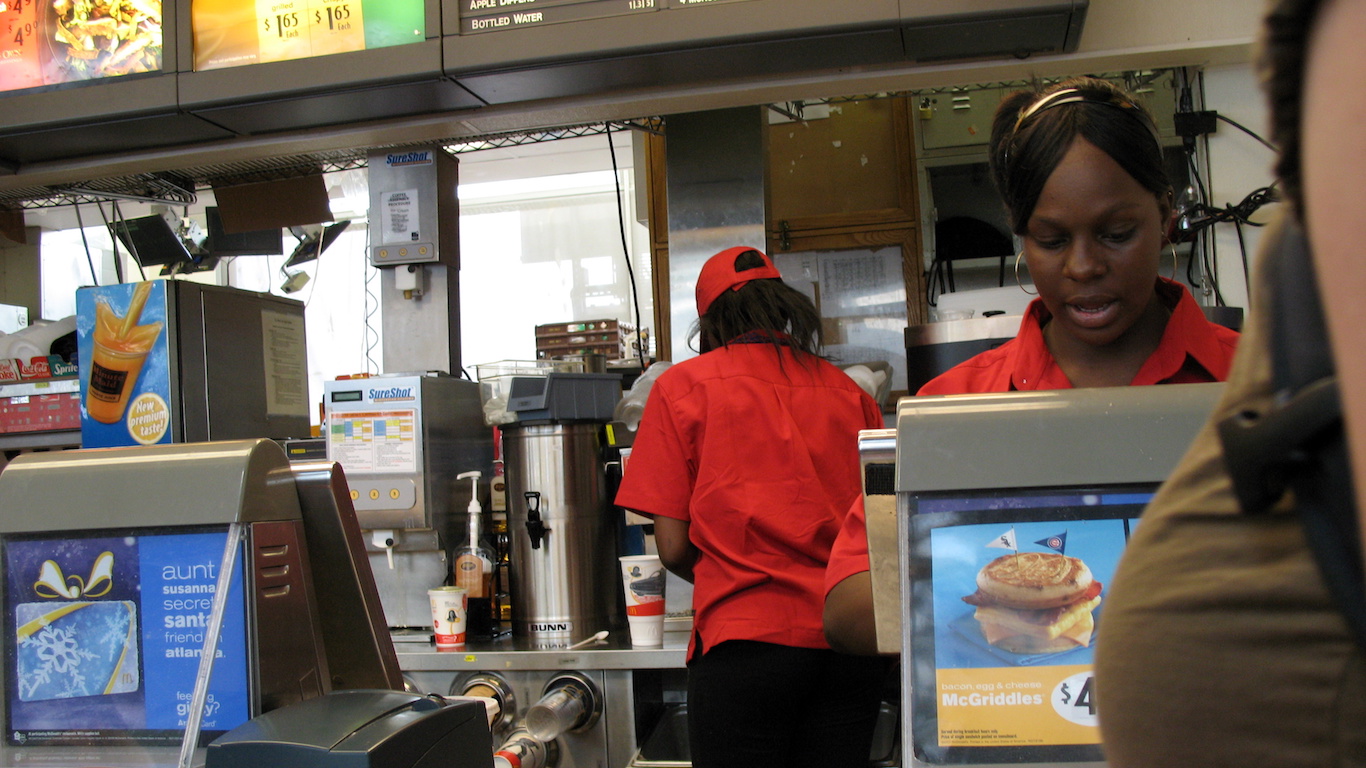Jobs
More Than Half of US Jobs Could Be Automated Over the Next 20 Years

Published:
Last Updated:

Looking at the effect of automation on today’s job market, the impact is being felt most in service and manufacturing jobs. That means fewer jobs for unskilled labor in the short term and, in the longer term, these displaced workers are likely either to leave the workforce altogether or to seek new skills.
Nothing earth-shaking about any of that. But the Federal Reserve Bank of St. Louis has just released a study of suggesting that 57% of U.S. jobs could be automated by 2038, and in the Eighth Federal Reserve District (the St. Louis Fed’s district), some 60% of jobs could be automated in the next 20 years.
The study compared the findings of a report from Oxford University published in 2013 with the Fed’s own analysis of Census data using employment data on metropolitan statistical areas (MSAs). While researchers focused on the impact of automation on the Eighth District, the analysis is worth noting for what could be its nationwide implications.
For example, smaller MSAs tend to have more employment concentrated in sales, production and food preparation occupations, all of which “have a high probability of automation” according to the researchers. This indicates that smaller MSAs may be the first to feel the effects of automation.
Office and administrative support jobs are most likely to be affected by automation in the Eighth District and likely elsewhere. The report noted:
Office and administrative support, food preparation and serving, sales, and transportation occupations are all big sources of employment in the District. Because many of these occupations involve routine tasks, they are likely to be automated over the next few years.
The occupations least likely to be affected include jobs in health care, business and financial operations, education and management occupations. These jobs all require more human intelligence and social interaction or involve non-routine tasks that will be difficult for computers to duplicate.
The researchers conclude:
The probability of automation does not equal the probability of job loss. There are many additional factors that we would need to account for to measure job loss. For example, these estimates do not include the equilibrium effect of how easy or hard it will be for a displaced worker to find a new job in other industries when replaced by a machine. Also, we do not consider whether the cost of research and development investment for computerization is lower than the cost of labor.
Visit the St. Louis Fed website to view the full report.
Are you ahead, or behind on retirement? For families with more than $500,000 saved for retirement, finding a financial advisor who puts your interest first can be the difference, and today it’s easier than ever. SmartAsset’s free tool matches you with up to three fiduciary financial advisors who serve your area in minutes. Each advisor has been carefully vetted and must act in your best interests. Start your search now.
If you’ve saved and built a substantial nest egg for you and your family, don’t delay; get started right here and help your retirement dreams become a retirement reality.
Thank you for reading! Have some feedback for us?
Contact the 24/7 Wall St. editorial team.